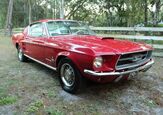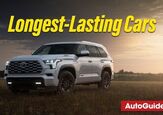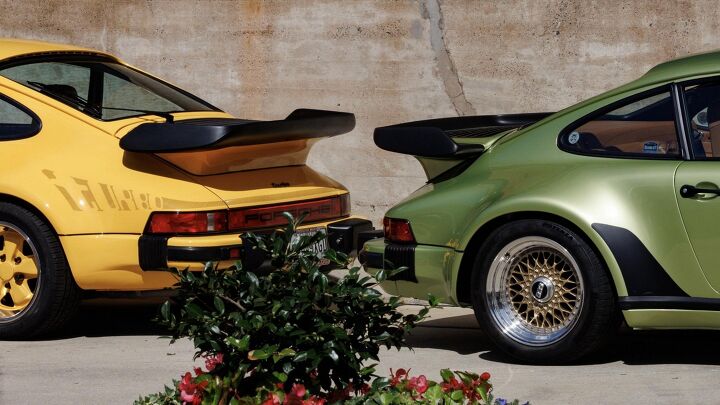10 Things You Should Know About Air Cooled Porsche 911s

One of the most recent entries in this series of articles focused on ten things gearheads should know about the Volkswagen Beetle, meaning this author can simply copy and paste from that story given the subject of this post.
Get an insurance quote from Hagerty - a company that provides insurance for people who love cars. In addition, if you are looking to invest in a classic car or sell one of your own, the Hagerty marketplace is for you!
Ok - it is unfair to label the original air-cooled Porsche 911 as a glorified VW Beetle. Mostly. While it is true that both machines share the basics of powertrain layout and engine type. In fact, Porsche refined and distilled this concept over the years, turning the air-cooled 911 from a rotary rear-engine (whose optional turbocharger surprised many with its snap oversteer) into a well-sorted and desirable performance car by the time it switched to water cooling in the 1998 calendar year.
1 - Shared Inspirations
Entschuldigung! We are mentioning the humble Beetle one final time since historians can, and rightly do, draw a direct line between it and the 911. Ferdinand Porsche first gifted his surname to a model called the 356, a car which absolutely based on a Beetle drivetrain - albeit appended with a much more aerodynamic body and Porsche’s own chassis.
2 - All in a Number
When it debuted at the Frankfurt Motor Show in 1963, the car’s official name was actually the 901, not the 911. What prompted the change? French car maker Peugeot got its knickers in a knot, saying it had domain over vehicle names consisting of three digits with a zero in the middle. Merde. Porsche simply changed the moniker to 911 - and the rest is history.
3 - Air Apparent
For those unfamiliar, air-cooled engines in a Porsche 911 used a combination of heat exchangers, fans, and metal cooling fins to push air around oil in the engine to cool it down and keep the engine running. However, efficiency wasn’t tremendous since this technology was always ‘on’, even when engines were still cold. There’s an argument that increasingly strict emissions regulations were part of the reason Porsche eventually made the switch to water cooling in 1997.
4 - Targa Practice
In 1965 at the same show the 911 debuted, Porsche introduced the 911 Targa. Neither a coupé or true convertible, a Targa allowed owners to experience open top driving in a completely new way. A removable folding roof and a fold-down plastic rear window (called the Soft Window by enthusiasts) were present, with a hoop of metal tying the B-pillars together. This meant one could drive a 911 Targa with the center roof section removed, the rear window folded down, or both. Numerous powered solutions were offered over the years, however the soft window Targas were only produced until 1968.
5 - Fill ‘er Up
For just the 1972 model year, 911 owners found themselves in possession of a car with an external oil filler door. It was a convenient feature, allowing people to top the engine off with 10w-40, something which was required more often than not back in those days. However, the oil filler door was removed in ‘73 after too many pump jockeys (and probably owners) mistook it as a fuel door and accidentally filled the engine with gasoline.
6 - Boosted
Porsche unveiled a turbocharged prototype of the 911 in September 1973, using body components from a Carrera RS 3.0 trim and wider tires in the back than front. Early models didn’t have a boost gauge, allegedly because suits felt customers might be disappointed to learn most of daily driving wasn’t done ‘in the boost’.
7 – Handle It
Lethal. Widowmaker. Malevolent force. All these terms, and more, have been used by owners and reviewers to describe the handling characteristics of Porsche’s first turbocharged 911. Showing up in the 1974 model year, the 911 Turbo took what was already a handful - a powerful car with a heavy rear weight bias - and added even more horses by way of a turbocharger whose power delivery was not unlike that of a light switch. In the wrong hands, a 1974 911 Turbo could pirouette like a figure skater, habits exacerbated by the fact that many were bought as a status symbol by wealthy people with more money than driving talent.
8 - Don’t Take it Away
By the 1970s, suits at Porsche felt the need for a new flagship, a front-engined car which went on to be called the 928. While a great performance machine in its own right, rumors that it would completely replace the vaunted air-cooled 911 were met with great resistance from the brand’s customer base, leading the company to sell the 928 alongside the 911 for about 15 years. The 911, you’ll note, remains in production.
9 - Got the Power
In 1995 Porsche introduced the ultimate air-cooled 911, the 993 generation GT2. Packing twin turbochargers on a flat-six engine with 3.6L of displacement, this beast belted out nearly 450 horsepower in its final model year. Porsche only produced 57 GT2s, a mighty walk from the original car’s 130 ponies when it launched over three decades prior.
10 - Water We Do?
As the 1990s were coming to a close, Porsche built its last air-cooled 911 for public road use on the last day of March in 1998. Its spec was a Riviera Blue Carrera 4 S, a car which went on to be owned by American TV star and noted Porsche collector Jerry Seinfeld. From that point onwards, the 911 utilized water-cooled engines, marking the end of a long and successful era.

More by AutoGuide.com Staff




































Comments
Join the conversation
'...habits exacerbated by the fact that many were bought as a status symbol by wealthy people with more money than driving talent.'
Shocking!
How good is the heater? - better than Bug or Corvair?